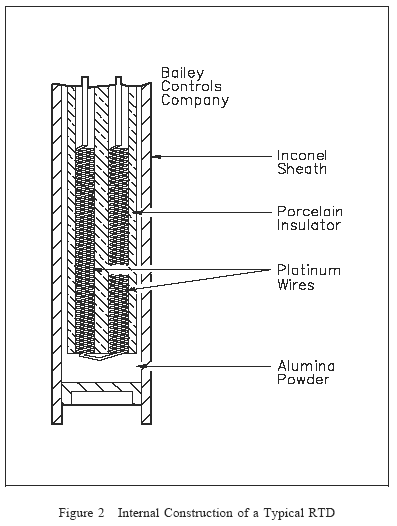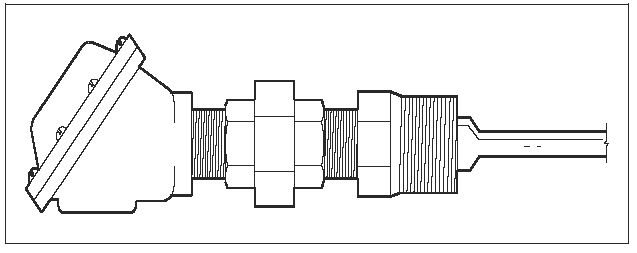Resistance Temperature Detector RTD Review
Electronics, Instrumentation & Electrical Database
Resistance Temperature Detector RTD Review
Resistance Temperature Detectors (RTD's) incorporates pure metals or certain alloys that increase in resistance as temperature increases and, conversely, decrease in resistance as temperature decreases. RTDs act somewhat like an electrical transducer, converting changes in temperature to voltage signals by the measurement of resistance. The metals that are best suited for use as RTD sensors are pure, of uniform quality, stable within a given range of temperature, and able to give reproducible resistance-temperature readings. Only a few metals have the properties necessary for use in RTD elements.
RTD elements are normally constructed of platinum, copper, or nickel. These metals are best suited for RTD applications because of their linear resistance-temperature characteristics (as shown in Figure 1), their high coefficient of resistance, and their ability to withstand repeated temperature cycles. The coefficient of resistance is the change in resistance per degree change in temperature, usually expressed as a percentage per degree of temperature. The material used must be capable of being drawn into fine wire so that the element can be easily constructed. RTD elements are usually long, spring-like wires surrounded by an insulator and enclosed in a sheath of metal. Figure 2 shows the internal construction of an RTD.


This particular design has a platinum element that is surrounded by a porcelain insulator. The insulator prevents a short circuit between the wire and the metal sheath. Inconel, a nickel-iron-chromium alloy, is normally used in manufacturing the RTD sheath because of its inherent corrosion resistance. When placed in a liquid or gas medium, the Inconel sheath quickly reaches the temperature of the medium. The change in temperature will cause the platinum wire to heat or cool, resulting in a proportional change in resistance. This change in resistance is then measured by a precision resistance measuring device that is calibrated to give the proper temperature reading. This device is normally a bridge circuit, which will be covered in detail later in this text.
The illustration below, shows an RTD protective well and terminal head. The well protects the RTD from damage by the gas or liquid being measured. Protecting wells are normally made of stainless steel, carbon steel, Inconel, or cast iron, and they are used for temperatures up to 1100C.
RTD Protective Well and Terminal Head
